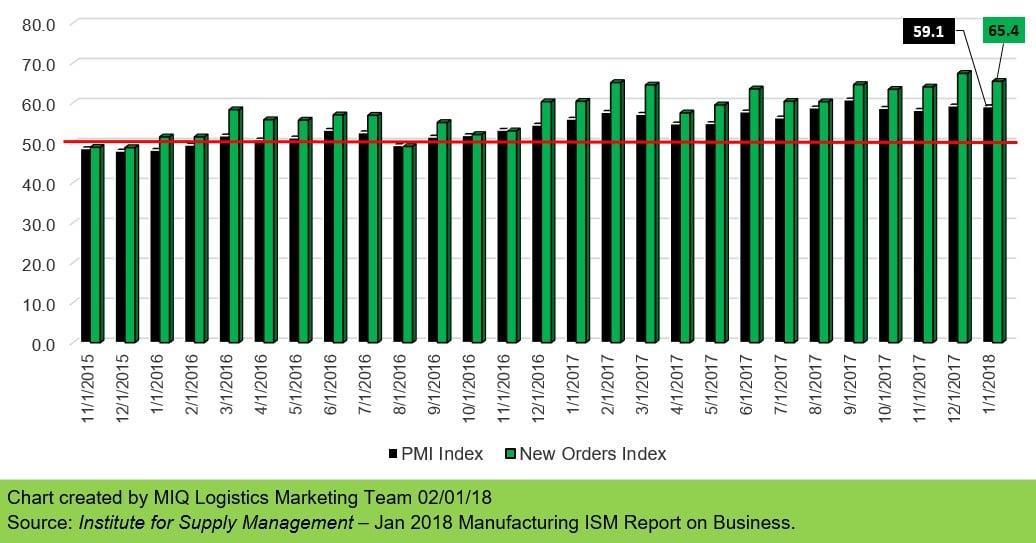Economic activity in the manufacturing sector expanded in January, and the overall economy grew for the 105th consecutive month, say the nation’s supply executives in the latest Manufacturing ISM® Report On Business®.

The report was issued today by Timothy R. Fiore, CPSM, C.P.M., Chair of the Institute for Supply Management® (ISM®) Manufacturing Business Survey Committee: “The January PMI® registered 59.1 percent, a decrease of 0.2 percentage point from the seasonally adjusted December reading of 59.3 percent. The New Orders Index registered 65.4 percent, a decrease of 2 percentage points from the seasonally adjusted December reading of 67.4 percent. The Production Index registered 64.5 percent, a 0.7 percentage point decrease compared to the seasonally adjusted December reading of 65.2 percent. The Employment Index registered 54.2 percent, a decrease of 3.9 percentage points from the seasonally adjusted December reading of 58.1 percent. The Supplier Deliveries Index registered 59.1 percent, a 1.9 percentage point increase from the seasonally adjusted December reading of 57.2 percent. The Inventories Index registered 52.3 percent, an increase of 3.8 percentage points from the December reading of 48.5 percent. The Prices Index registered 72.7 percent in January, a 4.4 percentage point increase from the December reading of 68.3 percent, indicating higher raw materials prices for the 23rd consecutive month. Comments from the panel reflect expanding business conditions, with new orders and production maintaining high levels of expansion; employment expanding at a slower rate; order backlogs expanding at a faster rate; and export orders and imports continuing to grow faster in January. Supplier deliveries continued to slow (improving) at a faster rate. Price increases occurred across all industry sectors. The Customers’ Inventories Index indicates levels are still too low. Capital expenditure lead times increased 8 percent during the month of January.”
Of the 18 manufacturing industries, 14 reported growth in January in the following order: Textile Mills; Fabricated Metal Products; Plastics & Rubber Products; Primary Metals; Machinery; Transportation Equipment; Apparel, Leather & Allied Products; Chemical Products; Computer & Electronic Products; Paper Products; Petroleum & Coal Products; Electrical Equipment, Appliances & Components; Miscellaneous Manufacturing; and Food, Beverage & Tobacco Products. Four industries reported contraction during the period: Printing & Related Support Activities; Wood Products; Furniture & Related Products; and Nonmetallic Mineral Products.
Source: Institute for Supply Management
